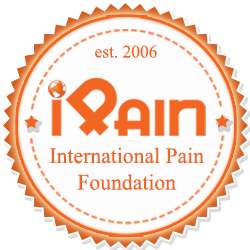When asked about symptoms, people who suffer from chronic visible and invisible illnesses often list pain as their chief complaint. No matter the type, chronic pain adversely impacts almost every aspect of a person’s life. It can also act as a red flag that warns patients and their physicians of deeper problems with their physical systems. Many people turn to over-the-counter or prescription medications to alleviate their suffering. Yet, these options often only treat symptoms instead of the root cause.
This guide covers how various foods can cause immune system and nerve dysfunction, physical changes that elevate pain, and health issues that increase pain. It also explores steps you can take to improve your diet, nutrition, and other areas to reduce and even eliminate chronic pain.
How Does Diet Affect the Way You Perceive Pain?
More often than not, people in Western societies consume what dietary and nutritional experts call the Total Western Diet (TWD). Instead of eating enough fresh and raw foods, fiber, fruits and vegetables, they primarily consume premade and processed foods that contain high levels of fat, refined grains, salt and sugar. People typically choose the TWD because of their upbringing or consider it budget-friendly, comforting and fast. In many cases, there’s an almost addictive aspect because several TWD foods make a person’s body crave things that are bad for them.
Yet, as noted by Harvard University and the University of Alabama, the Total Western Diet is linked to long-lasting inflammation and weight gain that can cause pain and other health issues. A study by the University of Alabama found that mice fed this diet for 13 weeks experienced an increase in systemic pro-inflammatory cytokines and fat mass, immune system dysfunction and appetite and energy usage signal problems.
Inflammation helps the body fight infections and deal with non-infectious injuries. The TWD pulls back this response at an abnormally slow rate. Healthy parts of the body become permanently damaged over time by “persistent” low-to-high inflammation, which then causes or exacerbates certain chronic illnesses, including arthritis, cancer, diabetes, heart disease and migraines. The mice also displayed hypersensitivity to environmental and exposure changes (i.e., heat and touch). In this and numerous other studies, researchers found that a poor diet does more than cause inflammation and damage. It exaggerates and heightens a person’s perception of pain.
Ways to Reduce Your Pain by Eating
The most obvious solution to this problem is to do away with the Total Western Diet. Yet, removing all fatty, sugary and similar foods isn’t a fast or perfect solution. Dietary changes take time. Some people’s bodies actually perform better when they eat foods found in the TWD.
Your first step doesn’t take place in the kitchen at all. Instead, ask your primary care provider or a dietician to test for nutrient deficiencies. Some cravings for inflammatory foods and ingredients and immune system problems come from deficiencies in nutrients your body needs to function, such as vitamins and minerals (i.e., A, multiple B, C, D, E, K, calcium, iron, magnesium, selenium and zinc). Once you have this information, you can create a new eating plan to reduce pain sensations.
The key to changing your perception of pain is to eat foods known to cause reductions in inflammation and other things that can build up or increase in the body. The National Arthritis Foundation recommends tart cherries to treat pain because they’re anti-inflammatory, which can help people suffering from osteoarthritis (OA). Tart cherries also reduce uric acid, which can prevent gout flare-ups.
A Mediterranean diet is often cited as another good starting point because it features a lot of ingredients that have anti-inflammatory properties from antioxidants, such as fruits and vegetables, dark green leafy vegetables, bright blue and red berries, legumes, nuts and whole grains. Experts also recommend specific types of fats, oils and foods less likely to cause inflammation, such as fatty fish like mackerel, sardines and salmon, and canola, flaxseed and olive oils instead of butter or corn oil.
Additionally, you need to consider the quality of the food you eat. Organic foods contain fewer harmful antibiotics and toxins used in traditional agricultural practices. You also need to consider how you eat food. Instead of large meals, you should eat smaller meals and increase healthy snacks throughout the day. You should use herbs and spices with anti-inflammatory properties for flavorings and increase overall fluid intake to improve hydration and flush toxins from your body faster.
Additional Methods for Pain Management
You can find several other options to help manage any pain that might remain after dietary changes. Most doctors recommend some form of exercise to manage pain. For example, your doctor might recommend light stretching or weight training with acupuncture, massage or yoga therapies. They might suggest that you try products that contain CBD, such as creams, drops, gummies, salves, sprays and roll-ons. CBD products have helped many people who couldn’t find relief with any other options.
That said, it’s important to explore potential underlying health problems. If you experience intestinal malabsorption, you might need life-long nutrient support from injection or sublingual treatments. You might need to deal with some pain from a condition that causes or worsens painful sensations, such as depression, fibromyalgia or obesity. Lastly, even barometric pressure and weather changes can impact the amount of pain you experience throughout a single day because of the expansion and contraction of fluids in the body, especially around joints and tissues.
Authored by Brittany Cotton
Published by International Pain Foundation, iPain Blog, Team iPain

